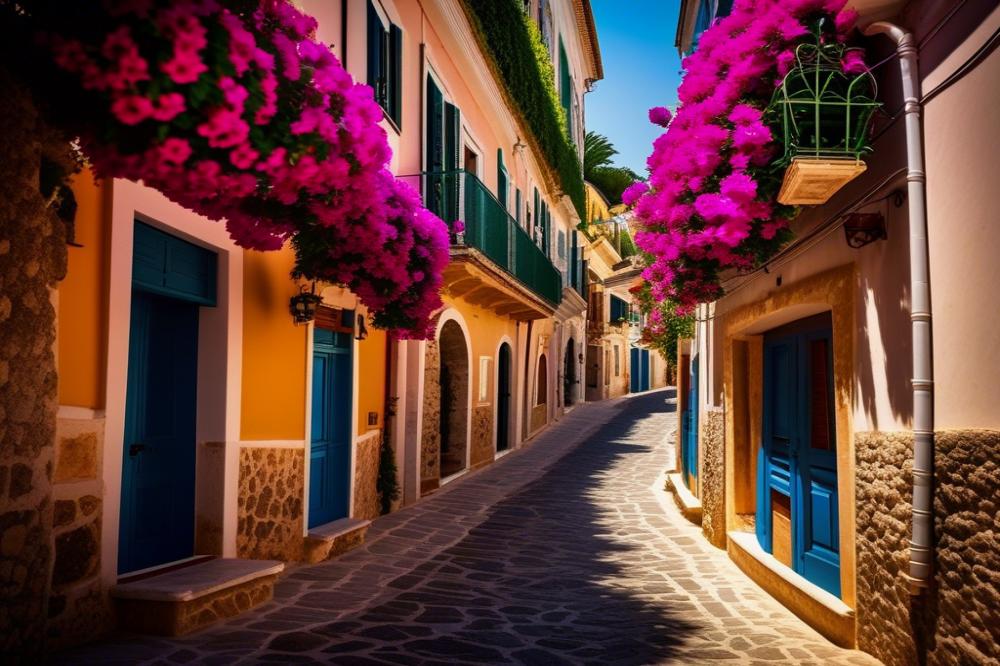Exploring the Traditional Villages of Corfu
Corfu, Greece, captivates travelers from around the world with its stunning landscapes and rich history. Renowned for its vibrant beaches and luxurious resorts, the island offers much more than just sun and surf. Venture beyond the bustling tourist spots to uncover hidden gems in the charming traditional villages, where the island’s cultural heritage truly shines.
These villages, characterized by ancient architecture and narrow cobblestone streets, tell stories of a time long past. Wandering through them reveals the essence of island life. Visitors can witness how people have lived for generations, preserving their customs and traditions. The atmosphere invites exploration and provides countless opportunities for photography, capturing both the beauty and simplicity of daily life.
Local cuisine plays a significant role in these communities, with recipes passed down through the ages. Dining on homemade dishes offers a taste of authentic flavors that define the island. This culinary journey complements the experience of immersing oneself in traditional culture, making each meal memorable.
Corfu villages serve as a reminder of the island’s storied past. They stand as a testament to the resilience and creativity of their inhabitants. In contrast to the often commercialized coastal areas, they provide an authentic escape for those seeking to understand the essence of the region. The adventure of discovering these locations adds depth to any holiday on this enchanting island. Ultimately, the charm of Corfu lies not only in its natural beauty but also in the rich tapestry of life found within its traditional corners.
Corfu villages: A Historical Overview
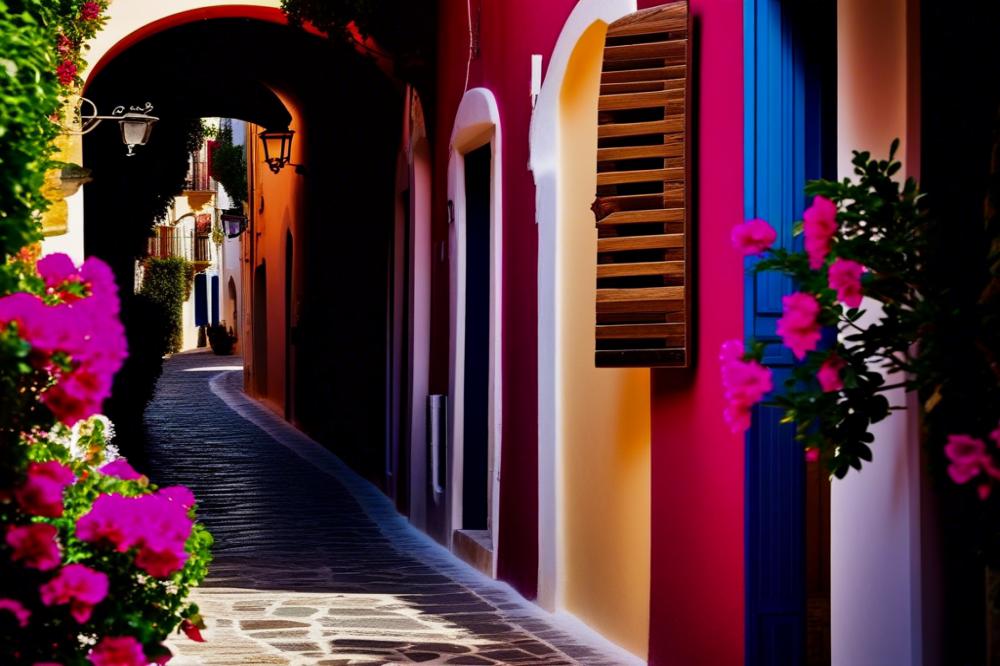
The traditional villages of Corfu, Greece, hold stories dating back centuries. These locations reveal the rich history of the island. Each village reflects the influences of various cultures that have shaped its development over time. The Venetian presence in the 15th to 18th centuries left a mark on architecture and lifestyle. Buildings with arched doorways and well-crafted balconies echo this era. The Italian influence is evident in many of the village layouts and public squares.
French occupation in the 18th century brought new ideas to the island. The introduction of organized agriculture changed local practices. You can see how the villages adapted to these changes through their local cuisine. Traditional recipes often showcase French techniques and ingredients. Culinary heritage gives visitors a taste of history with every meal.
During the British rule in the 19th century, Corfu changed again. The British left behind a unique style of architecture. Houses from this period often feature bright colors and detailed design elements. Such buildings add to the charm of the villages. Many serve as perfect subjects for photography enthusiasts. Capturing these sights provides a window into the past.
Today, the blend of influences contributes to the cultural heritage of the island. Visitors come to enjoy the local traditions that have survived through generations. You’ll find that the lifestyle in the villages is slower, honoring the island life. Tourism thrives here, as many people seek authentic experiences beyond the resorts. Exploring these villages offers an insight into how history shaped the island and its people.
Exploring Unique Traditional Villages
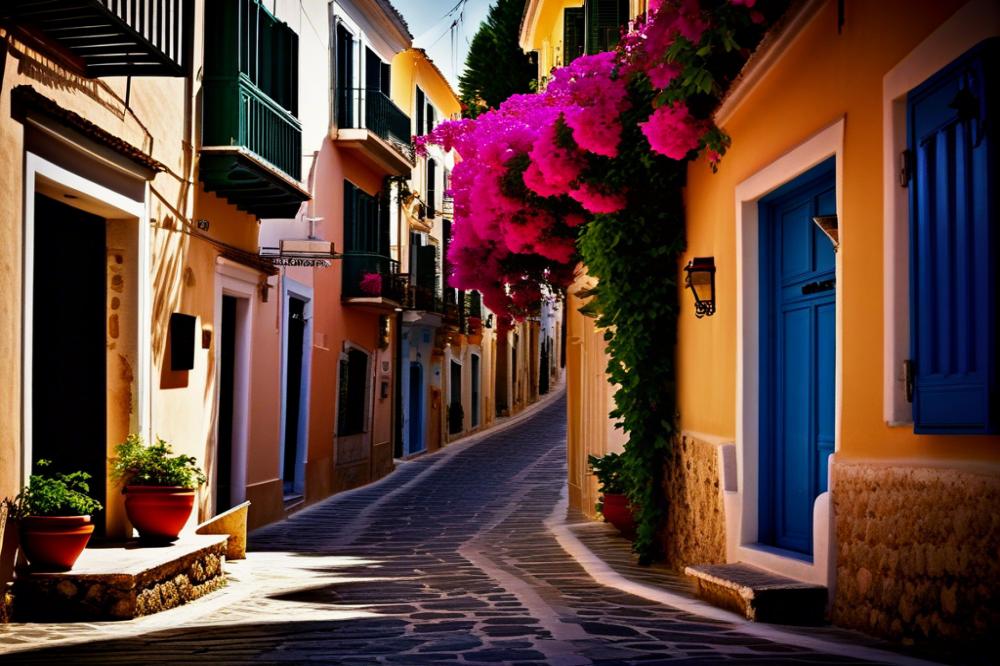
Paleokastritsa is a village that captures the essence of Corfu. Nestled along the west coast, it is famous for its stunning beaches and vibrant blue waters. Visitors are often drawn to the impressive Byzantine monastery that overlooks the sea. The picturesque views provide excellent opportunities for photography, making it a favorite spot for tourists. Local cuisine can be enjoyed in nearby tavernas, where fresh seafood and traditional dishes are served.
Kassiopi stands out with its charming harbor and historical significance. This village features the remnants of a Byzantine castle, which dates back to the 13th century. Walking through its narrow streets, one can admire the whitewashed buildings adorned with colorful flowers. Many cafes line the waterfront, offering a perfect place to relax. The atmosphere is lively, especially during the summer months when locals and visitors mingle.
Another delightful village is Gondoli. It retains much of its original architecture, giving a glimpse into the past of island life. Stone houses and narrow alleyways create a sense of timelessness. On certain days, a local market showcases fresh produce and handmade crafts, ideal for those wanting to experience the local culture. Wandering through its streets feels like stepping back in time. History whispers through every corner, inviting exploration.
Each village contributes to the rich cultural heritage of Corfu. They each have their surprises, from local festivals to scenic viewpoints. Exploring these areas reveals the heart and soul of the island. Whether savoring a meal in Kassiopi or taking in the scenery at Paleokastritsa, memories are made here. These traditional villages offer much more than just beautiful sights; they present stories woven into the fabric of the island.
Cultural Heritage and Local Traditions
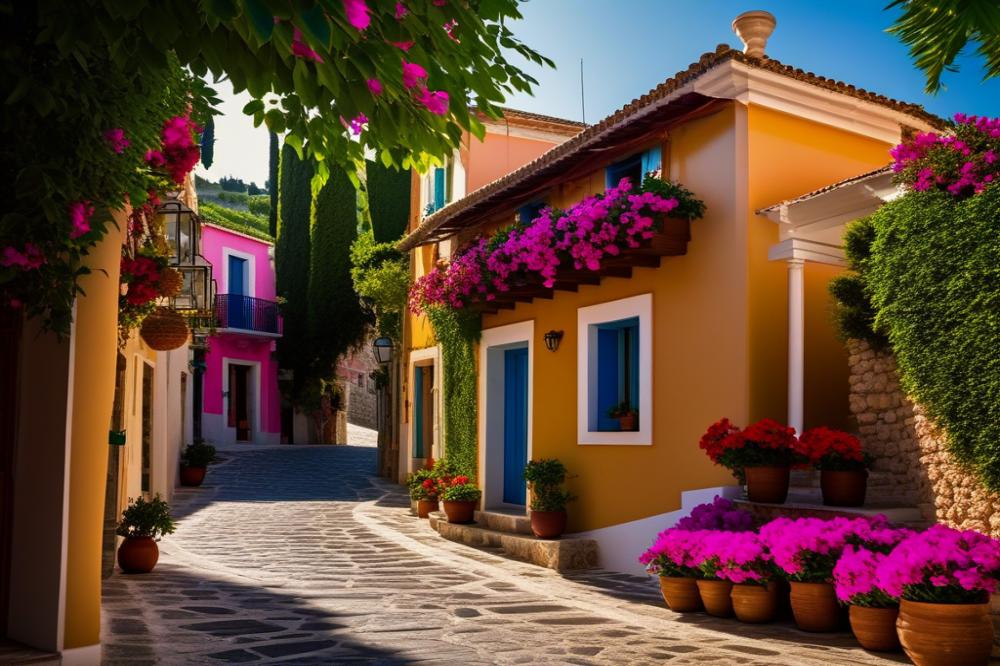
Exploring the traditional villages of Corfu provides a glimpse into the rich cultural heritage of this enchanting island. Festivals play a vital role in village life. These events, often rooted in religion or history, bring communities together, showcasing colorful costumes, music, and merry dancing. For instance, the Feast of Saint Spyridon is a highlight each year, where locals celebrate with processions and special meals.
Customs in Corfu reflect its long history and diverse influences. Many practices derive from Byzantine, Venetian, and British legacies. From family gatherings during Easter to other celebrations, traditions are passed from one generation to the next. Local cuisine is an essential aspect of these customs, where dishes are prepared using recipes that have been cherished over time. Exploring local tavernas reveals flavors of the island, from olive oil to fresh seafood, showcasing what generations have enjoyed.
Architecture also tells a story of the past. Many buildings display a blend of styles influenced by different periods. The quaint narrow streets of villages are adorned with charming facades, providing perfect opportunities for photography. These picturesque settings highlight not only the beauty but the unique character of island life. Historic churches, old mansions, and vibrant markets combine to create a profound sense of place.
In this hub of culture, art forms remain strong. Pottery, weaving, and traditional music reflect the creative spirit of the people. Locals participate in workshops to keep these skills alive. Children learn from their parents, ensuring that the artistry continues. More than just skills, these crafts symbolize the identity of the island.
Tourism can sometimes impact these traditions. Visitors often come to witness the authentic way of life. While it brings economic benefits, maintaining authenticity is vital. Communities strive to share their rich heritage while adapting to the modern world. This balance helps preserve the essence of Corfu’s culture for future visitors.
Indulging in Local Cuisine
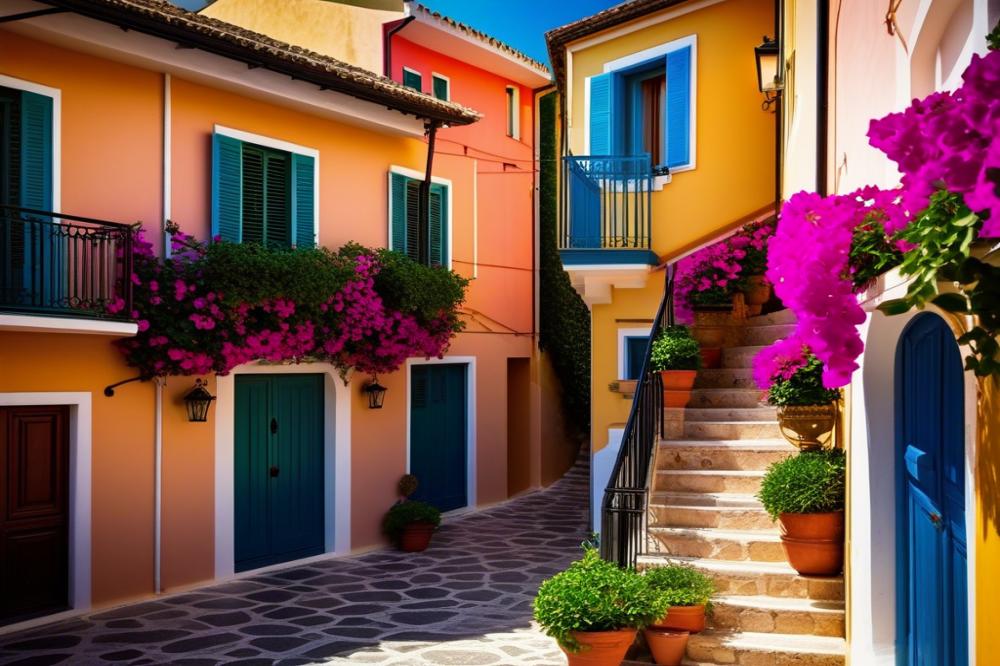
Food holds a special place in the heart of village life in Corfu, Greece. Dining here offers more than just a meal; it showcases the culture and deep-rooted traditions of the area. From hearty dishes to light snacks, the local cuisine reflects the history and agricultural bounty of the region.
One cannot visit without trying sofrito, a traditional dish made from tender beef simmered in a garlic and white wine sauce. This dish is a staple in village tavernas and represents the flavors that have been passed down through generations. Pastitsada is another must-try, featuring spicy stewed meat served over pasta, highlighting the island’s Italian influences.
Restaurant owners pride themselves on using local ingredients, often sourced from their own gardens or nearby farms. Fresh vegetables, olives, and aromatic herbs turn simple meals into culinary delights. The vibrant colors of eggplants, tomatoes, and peppers lend a feast for the eyes as well as the palate.
Dining in a village taverna is an experience in itself. The rustic architecture creates a warm and inviting atmosphere. Wooden tables and handcrafted decorations add charm to every meal. Most importantly, diners feel welcomed by the locals, who often treat guests as part of the family.
This connection between food and culture is evident in every bite. Meals often begin with meze, a selection of small dishes intended for sharing. Friends and families gather around tables, enjoying each other’s company while celebrating their heritage. Laughter and conversation blend with the clinking of glasses and the wonderful aroma of home-cooked food.
Travelers who visit the traditional villages can capture the essence of island life through photography. Images of bustling kitchens, vibrant markets, and lively tavernas tell stories of a community bound together by love for food and family. Food is not just sustenance; it is a way of life embraced in every corner of these charming villages.
Whether you savor a slice of savory pie or indulge in a rich dessert, each meal feels like a journey through Corfu’s cultural heritage. The approach to food here highlights the respect for traditions, the importance of gathering, and the joy of sharing. It is these elements that make dining in Corfu’s villages a memorable and enriching experience.
Architecture: A Blend of Styles
Visitors to Corfu, Greece, often marvel at the architecture found in traditional villages. Well-preserved stone houses line the narrow alleys, each telling a story of the island’s rich history. These structures, built from local materials, display a mix of Venetian, French, and British influences. Each style offers a glimpse into the island’s past and its interactions with various cultures.
Churches stand out prominently in these villages. The beautiful facades often feature intricate details and bright colors that attract the eye. Many locals consider these places of worship not just spiritual havens but also symbols of their cultural heritage. In fact, the architectural choices reflect the values and aesthetic preferences of the people. It’s common to see bell towers piercing the sky, as they have for centuries.
Narrow streets wind through the villages, creating a labyrinth that feels both ancient and alive. Strolling through these alleys, one can’t help but feel the pulse of island life. Photography enthusiasts find endless inspiration in the façades, the way light falls on the stone, and the vibrant flowers that adorn windowsills. Each corner brings a new perspective, making it easy to get lost in beauty.
Local cuisine further complements the scenery. The blend of architecture with culinary delights creates a unique tourism experience. Travelers not only explore the buildings but also savor traditional flavors from nearby tavernas. Many villagers take pride in sharing their culinary heritage, which is just as important as preserving their architectural treasures.
For those interested in history, these villages offer tangible connections to the past. Every house, path, and square speaks to different eras and events. The integration of various architectural styles showcases how Corfu has evolved through time. As visitors explore, they gain a deeper appreciation for the factors shaping the island’s identity.
Island Life and Community Spirit
In the traditional villages of Corfu, daily life is woven into a tapestry of community and warmth. Residents often greet each other in the morning, their smiles reflecting the strong bonds that tie them together. The pace of life is slower here, allowing villagers to savor each moment. Conversations frequently fill the air, with stories exchanged as locals enjoy their morning coffee at the village square.
Agriculture plays a vital role in sustaining the livelihoods of these communities. Many families grow olives, grapes, and vegetables, which contribute to the local cuisine. Dishes made from fresh ingredients create a profound connection between the people and their land. Meals are often shared among families and neighbors, further strengthening communal ties. The preparation of food can become a celebration of history, with recipes passed down through generations.
Architecture in Corfu’s villages reflects a rich cultural heritage. Stone houses adorned with vibrant flowers create picturesque scenes that attract photographers and tourists alike. Narrow streets invite exploration, while historical sites narrate the island’s past. The villagers take pride in their surroundings, often participating in preservation efforts to maintain their unique character.
Life on this island is about community. Friends gather for traditional festivities, showcasing music and dance that bring everyone together. Children play freely, learning from the elders who share tales of their ancestors. Such connections create a sense of belonging that is rare in many modern societies.
As tourism grows, new challenges arise. Yet, many locals strive to balance welcoming visitors with maintaining their way of life. Genuine hospitality remains a cornerstone of village culture. Visitors are often treated like family, which enriches their experiences and fosters respect for the island’s traditions.
The relationship between residents and their environment is deep and respectful. Many practice sustainable farming and embrace eco-friendly practices. This commitment to preservation is evident in the careful stewardship of their land. It’s a reminder of the importance of harmony with nature, something that resonates with those who call this place home.
Photography Opportunities in Corfu Villages
Corfu, Greece is a treasure trove of photography opportunities. The traditional villages dotting the landscape offer breathtaking scenes that capture the essence of island life. Charming architecture, vibrant colors, and stunning vistas await those who wander off the beaten path. Each corner reveals something new, from narrow cobblestone streets to rustic stone houses adorned with vibrant flowers.
Late afternoon light creates a magical glow, making it a fantastic time to snap photos. The sun sets over the hills, casting warm tones on the buildings. Morning hours also provide soft lighting, ideal for capturing the tranquility of village life before it wakes. Consider visiting places like Ano Korakiana or Pelekas for some stunning views and authentic settings.
In addition to the landscapes, local cuisine also offers a unique photography chance. Photographs of bustling markets, vibrant dishes, and locals enjoying their meals can tell rich stories. Observing the people in their natural environment showcases the cultural heritage of the island.
A great timing tip is to seek locations where the shadows play off the light. Look for areas where light filters through trees or buildings. The interplay of light and shadow adds depth to your images. Wide angles capture sweeping views, while close-ups emphasize the intricate details of architecture and nature.
Don’t forget to include your surroundings. The olive groves and cypress trees provide excellent backdrops for portraits. Be spontaneous, capturing genuine moments as locals go about their daily routines. Each snapshot can be a piece of Corfu’s rich history.
Consider bringing a zoom lens. This allows for taking clear shots from a distance without intruding on someone’s space. Take your time exploring; sometimes the best photos arise when you least expect them. Enjoy the process and create lasting memories through your lens.
Discovering the Charm of Corfu’s Traditional Villages
Exploring the villages of Corfu is an experience that lingers in the heart and mind. The charm of these locations is hard to capture in mere words. Each village tells its own story, filled with rich history and culture. Strolling along cobblestone paths reveals vibrant homes adorned with blooming flowers. Nearby, locals engage in their daily routines, offering a warm smile or a friendly greeting.
Cuisine plays a central role in understanding life in these areas. Sampling local dishes is a must. Try a plate of pastitsada or savor the flavors of sofrito. The tastes reflect centuries of tradition and influence from various cultures. Dining in a small taverna can feel like stepping back in time. Sharing a meal enhances the connection with the land and its people.
Visitors are encouraged to engage with the heritage. Festivals, often filled with music and dance, showcase the vibrancy of traditions. These events provide unique insights into local customs. Observing or participating can deepen one’s appreciation for life in these communities.
Moreover, the stunning landscapes surrounding the villages enhance the experience. Lush green hills and the azure sea create a picturesque backdrop. Each moment spent here is a chance to unwind and soak in the beauty of Greece.
In essence, exploring these traditional villages is more than just sightseeing. It is an invitation to immerse oneself in a world rich with stories, flavors, and history. Everyone leaves with unforgettable memories and a little piece of Corfu in their heart.

